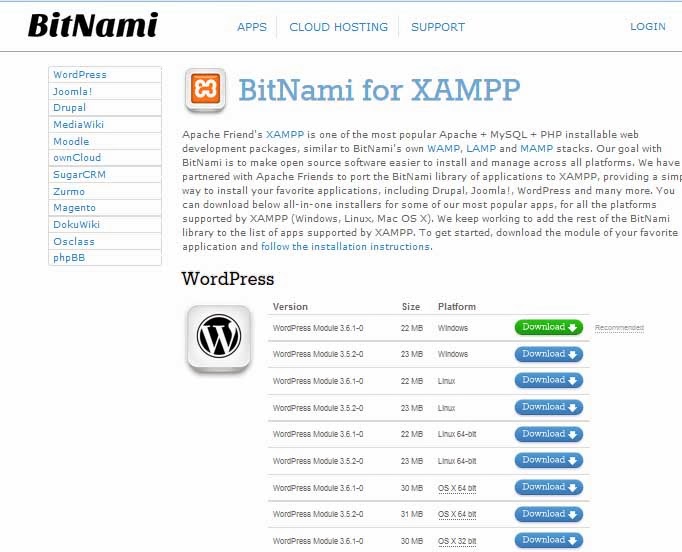

- #Phpmyadmin bitnami joomla stack install#
- #Phpmyadmin bitnami joomla stack password#
- #Phpmyadmin bitnami joomla stack windows 8#
- #Phpmyadmin bitnami joomla stack download#
The 'Readme.txt' file is a good one, and is at:
#Phpmyadmin bitnami joomla stack password#
The 'phpMyAdmin' username is "root" (without the double-quotation marks), and the 'phpMyAdmin' password is the password you entered during the Bitnami installation and is the same password as your Drupal site login. The little window titled 'Bitnami Drupal Stack', which appeared after the Bitnami installation finished, is also known as the 'Bitnami Manager' window and can be reopened by clicking "manager-windows.exe" at:
#Phpmyadmin bitnami joomla stack windows 8#
Those shortcuts are, using Windows 8 for example, at:Ĭ:\ProgramData\Microsoft\Windows\Start Menu\Programs\Bitnami Drupal StackĪs a notable example, the little window titled 'Bitnami Drupal Stack', which appeared after the Bitnami installation finished, can be reopened with the shortcut "Bitnami Drupal Stack Manager Tool". Shortcut links to all of the different Bitnami features can be accessed at your Windows 'Start' button. But, if you did not enter your own username, it will be the default that was displayed: "user". And, if you changed the default username by entering one of your own during the Bitnami installation, then your Drupal site login will use the username you entered. (You had to enter a password during installation. Login: The username and password, for 'login' to your site, are those you used during the installation of Bitnami. UsingĪfter you click the final installer button "Finish", your browser will automatically open to the "Bitnami: Awesome! Drupal is now installed" page, with browser address:Ĭlick "Access Drupal" to go to your new site's 'front' page (The homepage), at browser address:ĭrupal 8 Tip: When you now see your Drupal 8 site's homepage (aka 'front' page), click the top-right text link 'login'.
#Phpmyadmin bitnami joomla stack download#
After the download has completed, run the installer. Look under the heading for your computer system (Windows, MAC, or Linux), and click the button "Download" for either Drupal 7, or Drupal 8. Go to the page Bitnami Home > Applications > CMS > Drupal > Installers ~ /stack/drupal.
#Phpmyadmin bitnami joomla stack install#
See the page: Can You Host Multiple (and Separate) Drupal Sites Locally? Download & Install LimitationĪdditional Drupal site installations in Bitnami, in addition to the original Drupal site that is automatically created during the Bitnami installation, are not as simple to add to Bitnami as you might hope. After the installation you will immediately have a Drupal site ready to play with.Ī minor benefit using Bitnami compared to Acquia Dev Desktop, is that Bitnami also support other web apps like Wordpress. This is a very easy way to get a Drupal 7 or Drupal 8 site running on your Windows computer. There are addon packages called BitNami for XAMPP that are able to install some popular applications, easily, into your working XAMPP packages such as Wordpress, Joomla, Drupal, etc.Bitnami Drupal Stack includes Drupal, Apache, MySQL, and PHP. It's, also, free of charge and it's free to copy under the terms of the GNU General Public License.įrom version 1.7.4 Tomcat has been a part of the basic package and from version 1.7.2 Perl has been a part of the basic package. It is compatible with Windows, Linux, Mac and Solaris. The philosophy behind XAMPP is to build an easy to install distribution for developers to get into the world of Apache and easy local web hosting on one's own computer. Its acronymous name also suggests this, as mentioned below. XAMPP is an Apache distribution containing MySQL, PHP, Perl, Mercury ( mail server), PHPMyAdmin and Tomcat. XAMPP is a cross-platform Apache distribution bundled with MySQL, PHP and Perl.


 0 kommentar(er)
0 kommentar(er)
